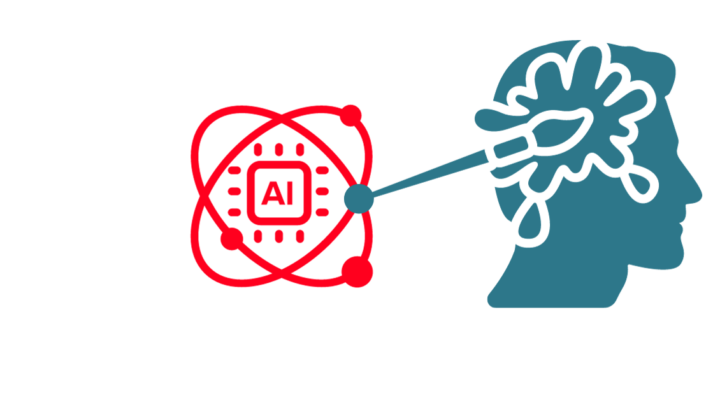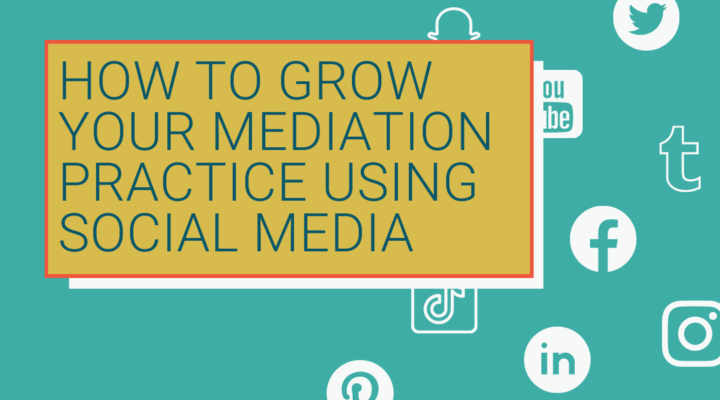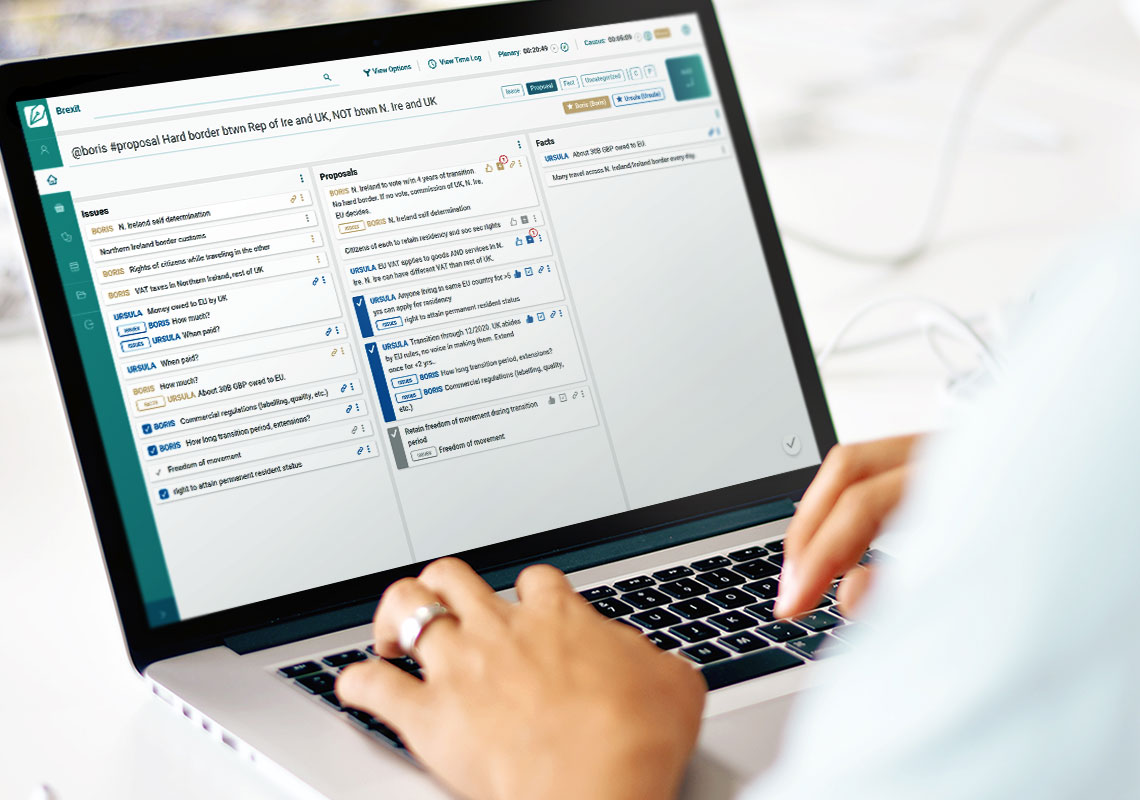Technology in Real Practice Systems
 Love it or hate it – I sure feel both ways – technology is going to be an increasing part of our lives in the future.
Love it or hate it – I sure feel both ways – technology is going to be an increasing part of our lives in the future.
And that goes double for dispute resolution practitioners. Dispute resolution is fundamentally about communication, and technological developments are rapidly revolutionizing how we communicate.
I became more conscious of the role of technology in how practitioners actually work when I developed the Real Practice Systems Project Menu of Mediation Checklists.
Read more about the Lande Checklists embedded in ADR Notable….
This post uses those checklists to illustrate practitioners’ great reliance on technology. Although the checklists focus on mediators, many of the technological issues also apply to attorneys and other dispute resolution practitioners.
What Is Technology?
Here’s a typical dictionary definition of technology: “A capability given by the practical application of knowledge.”
Interestingly, I found only one definition mentioning electronics: “Electronic or digital products and systems considered as a group.”
But that’s how most people seem to use it these days. So, although a flip chart – especially with post-it-note adhesive – is a technology that dispute resolution professionals use, we generally think of ever-more sophisticated electronic gizmos.
A checklist is a technology too, and it can be in electronic or hard copy form.
The American Bar Association’s Section of Dispute Resolution Guidance for Online Dispute Resolution defines ODR as the “use of technology to facilitate or perform any central function of preventing or resolving disputes.” Although it doesn’t limit its definition to electronic communication technology, it seems to primarily or exclusively focus on that form. That’s generally how I use the term in this post.
This post discusses use of technology that isn’t necessarily limited to where its central function is dispute prevention or resolution. Technology is ubiquitous in modern society. It’s practically impossible to escape it. So we may have a hard time distinguishing when it is central from when it is “merely” essential in dispute resolution.
One more conceptual note. The development and use of technology is proliferating at an accelerating rate. In many contexts, we can think of the following sequence (in reverse order):
- Very new, “cutting-edge” technology
- New normal
- Old normal
- Very old normal
In a very short period of time, cutting-edge technology becomes the new normal. The new normal becomes the old normal. And the old normal becomes the very old normal – stuff to put in museums.
Consider, for example, hardware that was called a “telephone.” Tech companies now compete to produce constantly upgraded “devices” with myriad new features including Dick Tracy-like video. “Cell phones” used to be flip phones that were limited to making voice calls. Some of us even can remember rotary-dial “equipment” that was hard-wired into the wall.
Think about evolving technologies for communication of textual material. Social media platforms. The cloud. Texting. Fax. Email. Overnight delivery services. Air mail. Telegraph. Pony express.
I mention all this because these technological changes affect our norms and behaviors. The Washington Post recently published this guide to the latest “phone call etiquette,” which presumably will become obsolete pretty soon. (Pro tip: For now, text before you call.)
Since dispute resolution practitioners constantly need to communicate with other humans, practitioners need to stay tuned to the ever-evolving technology hardware, software, and norms.
Technology in Real Practice Systems
With all this in mind, let’s take a tour of the aforementioned checklists to see references to practitioners’ use of technology. Here are the five general categories of checklists:
- General information to provide in websites and/or other materials
- Compliance with ethical requirements
- Tasks before mediation sessions
- Tasks during mediation sessions
- Reflection and improvement of techniques
As a practical matter, technology often is infused throughout a mediation. The following is a list of procedures where technology typically would play an especially important role.
Of course, practitioners may not use all these procedures in any case. In some contexts, such as day-of-trial in-person small claims mediation, technology plays a limited role.
General Information to Provide in Websites And/or Other Materials
Practitioners use websites, email, and other means to provide information about:
- Practitioners’ background and experience
- The mediation process
- Description of services
- Initiation of cases
- Communication with participants
Compliance with Ethical Requirements
- Provide clear, accurate, and non-misleading information in advertising and about fees.
- Check for conflicts of interest and make any necessary disclosures.
- Ask about participants’ disabilities and make reasonable accommodations.
- Protect confidentiality of communications.
Tasks Before Mediation Sessions
- Conduct intake procedures, gathering information about the participants and cases.
- Schedule mediation sessions.
- Discuss technology to be used before and during mediation sessions, and confirm the feasibility.
- Have conversations and exchange documents about the substance of the cases.
- Make logistical arrangements for mediation sessions including any accommodations for special needs.
- Make arrangements for billing and payment.
- Draft and arrange for execution of agreements to mediate / engagement letters.
Tasks During Mediation Sessions
Especially since the pandemic, many mediations are conducted exclusively by video. Some cases use a hybrid process with some people meeting in person and others participating by video or phone. Obviously, in those cases, technology is an essential part of the process. Even for in-person mediations, practitioners might use technology to take the following specific steps.
- If using technology, confirm that technological connections are working properly.
- Take notes of conversations.
- Use decision tree analysis software.
- Use litigation analytics programs.
- Draft memos of understanding or agreement.
- Gather signatures on documents at a distance.
- Draft memos summarizing follow-up plans.
- Plan for monitoring of implementation of agreement.
Reflection and Improvement of Techniques
- Write self-assessment of case.
- Interview or survey participants.
- Organize or participate in educational practice group, possibly by video.
It is indisputable that technology will play an increasing role in dispute resolution practice. Practitioners need to keep up or be left behind.
If you are using “old normal” technology, pretty soon it will be “very old normal.” Both the technology and you might need to find a home in a museum.
And you can’t wait. Artificial intelligence already is here and is radically changing practice.
So buckle up. You may co-mediate with an avatar mediator sooner than you might think.
Thanks to Gary Doernhoefer and John Stephens for comments on an earlier draft.






